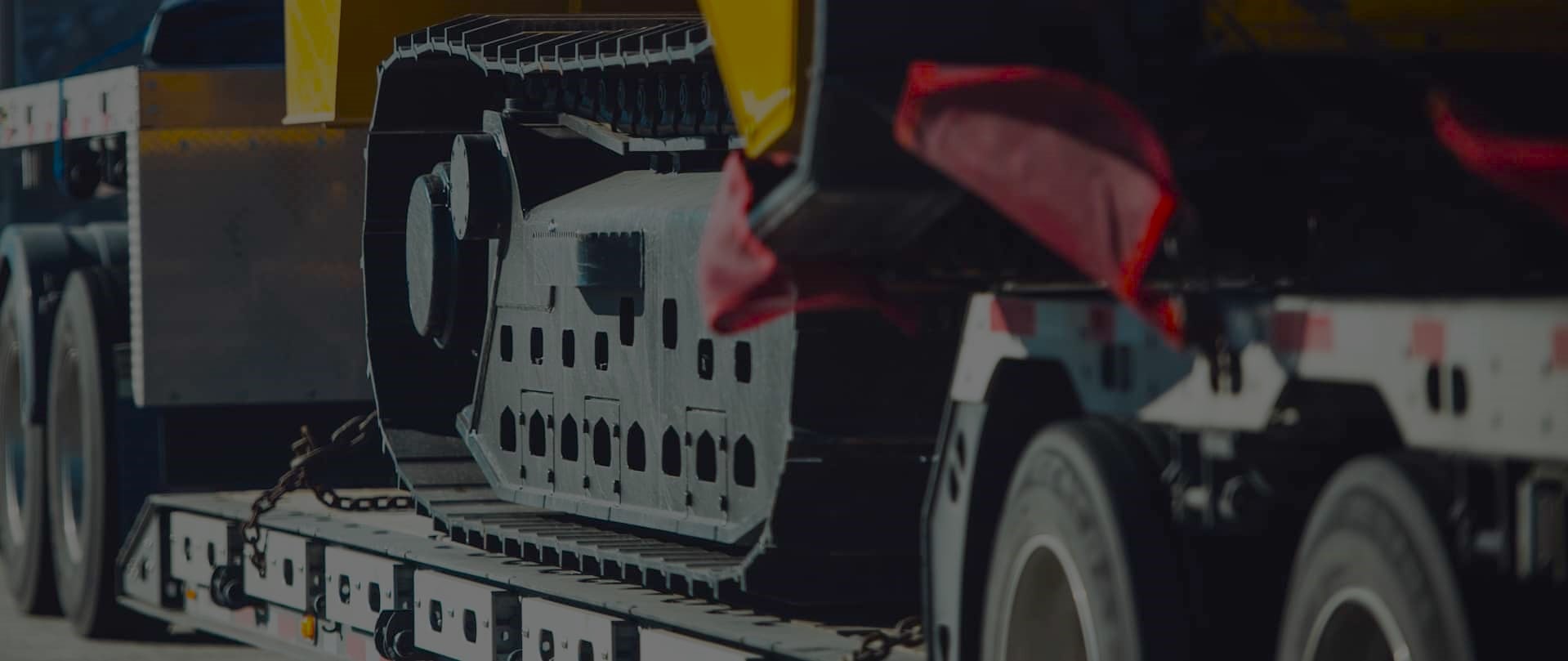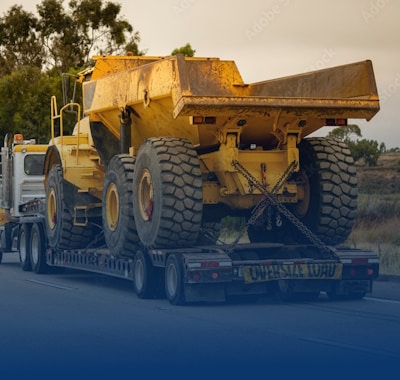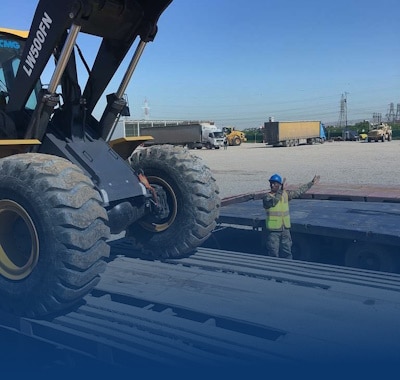How to Plan a Successful Cross-Country Heavy Haul Shipment
Freedom Heavy Haul can offer expedited Pickup and Delivery for any size shipment anywhere in the USA. Contact us today for No Hassle, No Pressure Pricing.
Planning a cross-country heavy haul shipment is complex. You need to think about the cargo, its size and weight, the route, and the rules. When moving large or heavy cargo across the U.S., knowing heavy haul logistics is key. This guide will help you plan and execute your cross-country freight shipping smoothly.
Before planning your shipment, understand the challenges of heavy haul transport. Knowing these will help you manage the demands of shipping across the country. This guide will give you the tools and info to plan a successful shipment, from start to finish.
Introduction to Heavy Haul Shipments
Heavy haul shipments need special equipment and experts. Working with experienced pros ensures your shipment is handled well and safely. This guide will be your resource for planning a heavy haul shipment, covering logistics and shipping.
Key Takeaways
- Understanding heavy haul transport is key for a successful move.
- Planning a cross-country shipment needs careful thought on cargo size and weight.
- Heavy haul logistics are vital for cross-country shipping success.
- Following regulatory rules is essential for a smooth shipment.
- Experienced professionals are crucial for handling shipping demands.
- A detailed guide is needed to navigate heavy haul logistics and shipping.
Understanding the Complexities of Heavy Haul Transportation
Planning a heavy haul move involves understanding the details of transporting heavy machinery. You must prepare for long-distance transport, knowing the challenges it brings. This includes navigating through busy cities, handling different weather, and following state and federal rules.
The size and weight of what you’re moving are key. They decide what equipment you need, the route, and the permits. Load size and weight are crucial in heavy haul transport. Knowing these details is vital for a successful move. Some common issues in moving across the country include:
- Navigating through congested cities and urban areas
- Dealing with varying weather conditions, such as extreme temperatures or precipitation
- Ensuring compliance with state and federal regulations, including permits and documentation
By thinking about these points, you can prepare better for your long-distance transport. Whether it’s oversized or overweight cargo, having a good plan is key. It ensures your shipment goes smoothly and successfully.
Essential Pre-Planning Steps for Your Heavy Load Movement
When you’re shipping oversized cargo, managing your project well is key. You must check the cargo’s size and weight. This helps you figure out the best way to move it.
To make sure your heavy haul goes smoothly, follow these steps:
- Look for the best routes for your cargo. Consider any roadblocks or issues you might face.
- Find out what permits and papers you need for the shipment.
- Plan out how to load and unload the cargo carefully.
By taking these important steps, you can manage your heavy haul project well. This leads to a successful and easy shipping experience for your oversized cargo.
How to Plan a Cross-Country Heavy Haul Shipment: A Comprehensive Guide
Planning a cross-country heavy haul shipment needs a solid strategy. You must think about the route, timeline, and resources. This ensures your shipment arrives safely and on time.
Route planning and analysis are key for cross-country heavy hauls. You need to find the best and safest route. This means looking at road conditions, traffic, and weather. This way, you avoid delays and keep the transport smooth.
Key Considerations for Route Planning
- Assessing road conditions and potential hazards
- Evaluating traffic patterns and potential congestion points
- Considering weather forecasts and potential weather-related hazards
Creating a timeline is also vital. It includes planning the loading, transit, and unloading of your cargo. You also need to allocate the right equipment and personnel. A detailed timeline helps cover all logistical aspects, reducing delays.
By following these steps and considering the important factors, you can have a successful heavy haul shipment. Stay focused on coordinating the transport to meet your goals.
Navigating State-by-State Regulations and Permits
When planning a heavy haul move, knowing the rules is key. Heavy haul logistics mean dealing with many state rules and permits. You must make sure your shipment meets all the rules, like size, permits, and safety gear.
Understanding Permit Requirements
To move smoothly across states, you must know the permit rules for each state. You’ll need to get permits that change by state and follow size and weight rules. Planning a heavy haul move means thinking about these details to avoid problems.
Multi-State Compliance Strategies
Creating plans for all states can make getting permits easier. This includes making a checklist for all needed documents. This way, you can move smoothly and avoid any issues.
- Obtain necessary permits for each state
- Comply with regulations related to load size and weight
- Create a detailed documentation checklist
By taking these steps and knowing the rules, you can have a successful heavy haul logistics operation.
Selecting the Right Equipment for Your Heavy Haul
Choosing the right equipment is key for cross-country freight shipping. You must think about the cargo’s size, weight, and the route. This helps pick the best equipment for safe and efficient transport.
The trailer type is very important. A flatbed is great for big, oversized cargo. A step deck is better for cargo that needs a lower deck. Double drop trailers are best for very large or heavy cargo. Keeping the equipment in good shape is also crucial for safety and avoiding delays.
When choosing equipment, consider a few things:
- Cargo size and weight
- Route and road conditions
- Type of cargo being transported
- Equipment maintenance and condition
By carefully choosing the right equipment, you can have a safe and successful cross-country freight shipping experience.
Safety Considerations and Risk Management
When getting ready for long-distance freight transport, safety and risk management are key. Good heavy haul project management means looking for and fixing potential dangers. This includes checking the weather and road conditions to avoid surprises like bad weather or road closures.
In heavy haul project management, safety and risk management are very important. You should have a plan for emergencies like accidents or unexpected events. This plan should cover how to handle emergencies and how to talk to others and emergency services.
Some important safety and risk management tips for heavy haul transport are:
- Regularly check vehicles to make sure they’re working right
- Train drivers and crew on safety and emergency response
- Use safety rules for loading and unloading cargo
- Make sure you have enough insurance to cover losses
By focusing on safety and risk management, you can lower the chance of accidents and make sure your heavy haul shipment goes well. This is even more important for long-distance freight transport, where the risks and challenges are bigger. By being proactive and informed about safety and risk management, you can help keep your cargo safe and on track.
Cost Factors in Cross-Country Heavy Transport
Shipping oversized cargo across states comes with many costs. The size, weight, distance, and equipment needed all play a part. You must also think about permits, fuel, labor, and escorts or pilot cars for a good budget.
Planning heavy equipment transport well can save money. Here are some key costs to keep in mind:
- Equipment rental or purchase costs
- Fuel and maintenance expenses
- Permit fees and regulatory compliance costs
- Labor costs for loading, unloading, and transportation
Knowing these costs helps you estimate the total cost of your shipment. This way, you can plan and execute your cross-country heavy haul. It ensures your oversized cargo is transported successfully and within budget.
Coordinating with Support Services and Escorts
Coordinating with support services and escorts is key for a smooth cross-country freight shipping. It’s important to know how pilot cars, police escorts, and communication work together. This ensures a safe and successful journey.
Pilot cars are crucial in heavy haul logistics. They guide the shipment through tough routes, manage traffic, and follow rules. For cross-country shipping, knowing what pilot cars need is essential. This includes the right equipment, training, and certifications.
Pilot Car Requirements
- Understanding the regulations and permits required for pilot cars
- Ensuring pilot car drivers have the necessary training and certifications
- Equipping pilot cars with the necessary communication and navigation tools
Police escorts might be needed for oversized or overweight cargo. Working with local police is important. Clear communication with everyone involved is key. This way, the shipment moves safely and efficiently.
Technology and Tracking Solutions for Heavy Haul Projects
Technology is key in managing heavy haul projects. It helps track your shipment’s location and status in real-time. This boosts security and lets you quickly respond to any problems.
Planning for long-distance freight transport is crucial. Technology makes this process smoother, more efficient, and safer. It offers several benefits, including:
- Real-time tracking and monitoring of shipments
- Improved communication and coordination with drivers and support teams
- Enhanced security and risk management
- Increased efficiency and reduced costs
Using these technologies ensures a better heavy haul project management experience. It helps with oversized cargo or heavy equipment transport. Technology makes long-distance freight transport smoother and safer, ensuring your shipment arrives on time.
Managing Timeframes and Delivery Expectations
When coordinating heavy equipment transportation, making a detailed schedule is key. It should cover everything from loading to unloading. This includes the challenges of shipping oversized cargo across states, like choosing the right route and dealing with weather.
Having a solid plan helps keep your shipment on track and within budget. It’s important to think ahead and plan for any delays.
To handle unexpected delays, it’s smart to have a backup plan. This means tracking your shipment and knowing where it might get stuck. Keeping everyone informed, like the client and drivers, is also crucial.
For more tips on handling complex shipments, check out freedomheavyhaul.com. They share strategies for coordinating heavy equipment transportation and shipping oversized cargo across states.
Key Strategies for Managing Timeframes
- Develop a detailed schedule plan that accounts for all aspects of the shipment
- Implement delay mitigation strategies, such as contingency planning and real-time monitoring
- Communicate effectively with stakeholders, including the client, drivers, and support services
By using these strategies, you can make sure your shipment arrives on time and within budget. Remember, being flexible and ready to adjust is key to a successful shipment.
Your Path to Heavy Haul Success: Key Takeaways and Best Practices
Planning a cross-country heavy haul shipment needs careful planning and a deep understanding of the process. This guide offers tips to help you manage heavy haul logistics smoothly. It covers everything from knowing state laws to picking the right equipment and managing time.
To make your cross-country freight shipping go well, focus on safety, efficiency, and clear communication. Use technology and support when you can, and be ready to adjust for any surprises. With the right planning and help from experienced logistics companies, your heavy haul move can be a success.







